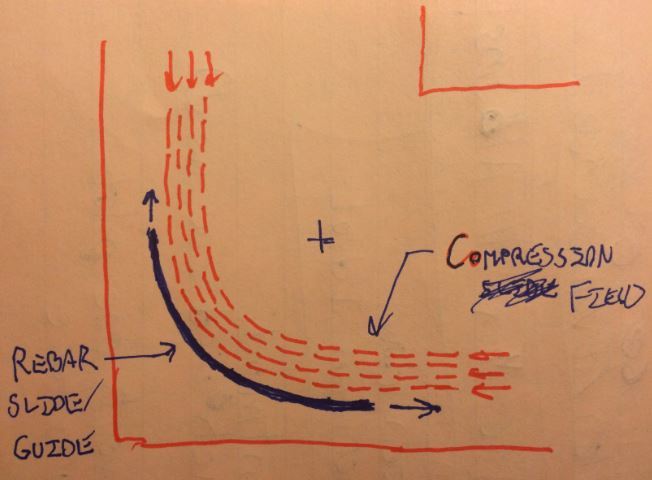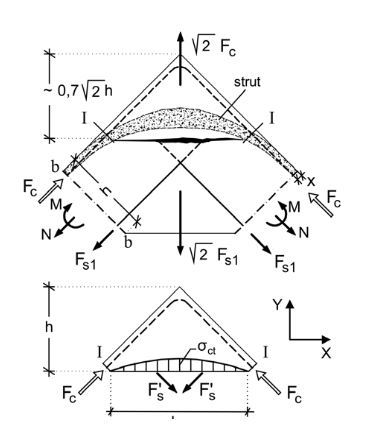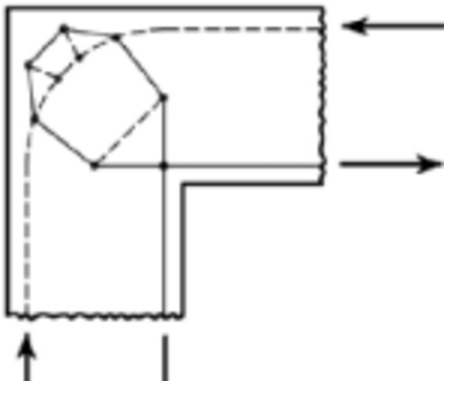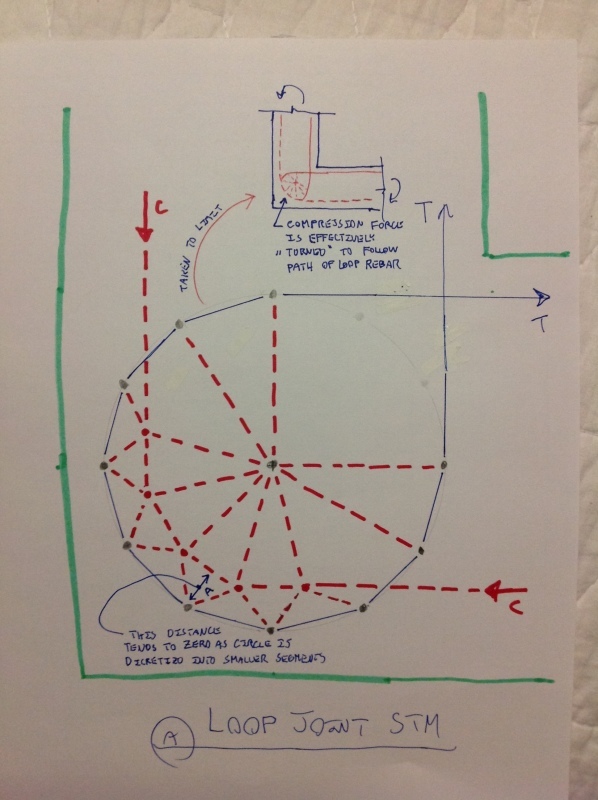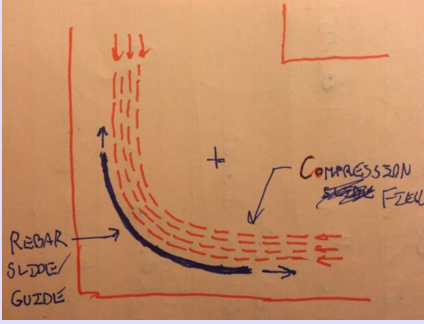First off, I'm just having fun here pitching a possible theory to explain the mechanics of the loop joints. I find it an interesting problem to study because, as far as I can tell, nobody else has proposed a competing theory. No one should be taking all this stuff too seriously
bookowski said:
But the bar in tension is in contact with and parallel to the compression?
teguci said:
strain compatibility requires the tension and compression elements not be next to, or in line with each other.
teguci said:
The biggest problem with an open corner STM is that the compression strut will be either completely outside or mostly outside the reinforcement envelope and we need to institute a dummy tension tie to pull the compression strut in at the corner.
Yeah, there's that. That's what actually led me to the wacky STM model. The way I see it, you've got three choices for how you could take the compression force around the outside of the corner rather than diagonally across it.
1) The concrete compression rounds the corner slightly to the inside of the rebar. Concrete only in compression (STM above).
2) The concrete compression rounds the corner slightly to the outside of the rebar. Minor reliance on concrete in tension.
3) The concrete compression rounds the corner right over top of the rebar. You have strain compatibility issues but I believe that this is still a physical possibility. In a way, every piece of rebar that was ever developed / anchored within concrete is an example of this: tension strained rebar existing within a nearly parallel concrete compression field.
While the compression strut being right on top of the tension rebar gives me a headache, the strut being in close proximity to the bar really does not. Once a viable STM is established, I think that it is just a matter of scale. If this joint were ten feet across rather than eight inches, strain compatibility issues would be much more innocuous.
Teguci said:
Moment compatibility tells us that the resultant compression strut will cross the diagonal at a little more than 1/2 the diagonal length...The proposed STM for the report shows up on the last page
That's the whole point of the STM exercise really. When the crappy corner details are used, you do do get that diagonal strut and your effective member depth becomes seriously compromised (STM model below from the excellent doc that you posted). Testing has made it abundantly clear that the looped joints perform much better than the lesser details. The question that I'm trying to address is
why. With my STM model, I'm proposing that the the reinforcing loop allows the concrete compression strut to hug the outside of the corner more closely. And that would result in an improved flexural depth across the corner.
I like to debate structural engineering theory -- a lot. If I challenge you on something, know that I'm doing so because I respect your opinion enough to either change it or adopt it.

